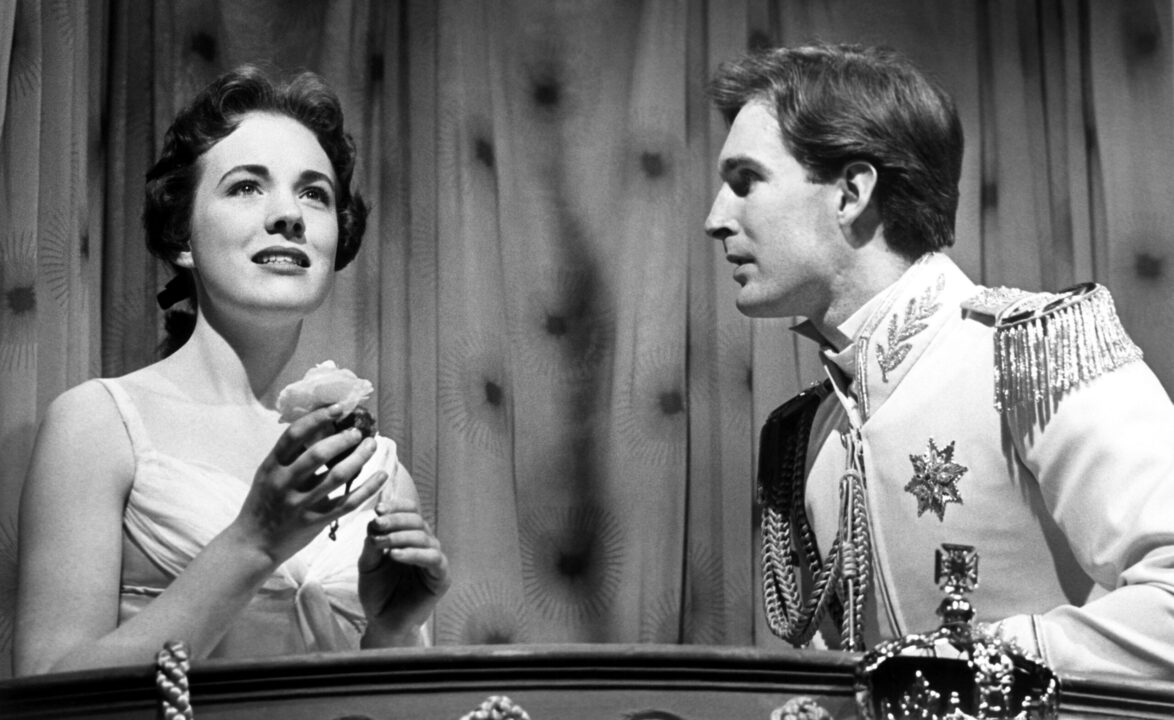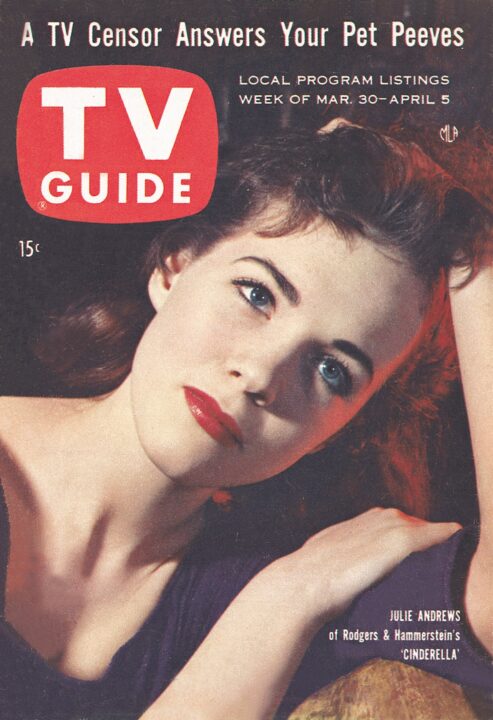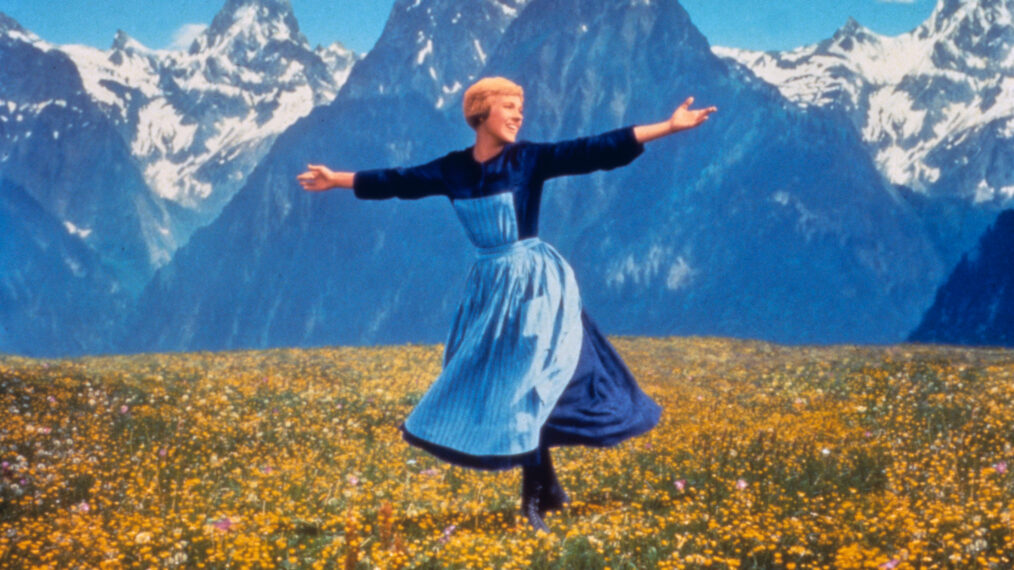Rodgers & Hammerstein’s ‘Cinderella’: The Live TV Spectacle That Made Julie Andrews a Star

Before Julie Andrews enchanted the world as Mary Poppins or twirled through the Austrian hills in The Sound of Music, she had already won hearts as Cinderella in a historic live TV event.
On March 31, 1957, a fresh-faced Andrews led Rodgers & Hammerstein‘s Cinderella, a musical written for television, not adapted from Broadway. And it was a game-changer, drawing a record-breaking 107 million viewers — 60% of America’s population — and solidifying Andrews as an up-and-coming star.
The Glass Slipper Finds Its Foot

CBS Photo Archive/Getty Images
The project was a big deal for Rodgers and Hammerstein, marking their television debut. Originally commissioned by NBC, creative differences (and the chance to work with Andrews) prompted the pair to decamp for CBS. Unlike previous televised musicals, Cinderella had never been staged before, making its live broadcast even riskier.
Andrews, then starring in My Fair Lady on Broadway, was already on their radar. Before landing Cinderella, she auditioned for their musical Pipe Dream, giving the audition her all; Richard Rodgers later approached her to let her know her performance was, as she told the Television Academy Foundation, “absolutely adequate.” He was teasing, of course, and made sure Andrews knew that, whenever she was available, he and Hammerstein would be delighted to work with her.
Enter Cinderella.
Magic In The Making

Everett Collection
To accommodate their young star — who was still appearing in My Fair Lady — Rodgers and Hammerstein based Cinderella’s production at CBS’ enormous New York headquarters. Even then, fitting the ambitious production to a television stage proved challenging. According to Playbill, the broadcast featured 100 costumes, 56 performers, 33 musicians, 88 stagehands and crew members, and four massive cameras.
Alongside Andrews, the cast featured Jon Cypher (Hill Street Blues) as Prince Christopher, Alice Ghostley (Bewitched) and comedian Kaye Ballard as the wicked stepsisters, Broadway veteran Ilka Chase as the stepmother, and Edie Adams as the Fairy Godmother.
With no precedent of their own to work from — and intent on delivering an experience as close to Broadway as they could get it — Rodgers and Hammerstein meticulously planned every detail, including how to handle commercial breaks without breaking the story’s magic. “Deciding who would say what and who would sing what took us a few days,” Hammerstein told TV Guide Magazine. “We blueprinted the action, then we began writing.”

TV Guide/courtesy Everett Collection
They also composed a stunning original score, including now-iconic songs like “In My Own Little Corner,” “Ten Minutes Ago” and “Impossible; It’s Possible.” CBS, determined to make Cinderella a sensation, had Andrews record six songs in advance, and distributed them to radio DJs and television critics. A full cast album hit shelves the day after the broadcast.
The production’s sponsors, Pepsi-Cola and Old Spice parent company Shulton, also went all in. Pepsi even distributed 5 million Cinderella comic books with six-packs of soda. The marketing push paid off. When the clock struck air time, millions of Americans tuned in — so many that Cypher noted how deserted the bustling Big Apple streets were as he headed home.
A Fairy Tale Performance

Everett Collection
As showtime approached, Andrews’ nerves were raging. Andrews told the Television Academy Foundation, “Just before we went on the air, some kind soul said, ‘You realize that, if we are successful, more people will see the show tonight than if you played in My Fair Lady for 15 years.’ And I thought, ‘This is not the time to be telling me that!’”
One of the most nerve-wracking moments, Andrews added, came during Cinderella’s rags-to-riches transformation. Instead of fancy camera tricks, director Ralph Nelson opted for some lightning-fast stage work. “While the camera was settled on [my shoe], I was changing hair, crown, costume — everything at the top — as the camera very slowly traveled up,” she said. “I hopefully was going to be dressed by the time the camera got to my face.”
Despite the challenges, the show went off without a hitch, leaving an entire nation spellbound.
Happily Ever After

Everett Collection
Though Cinderella made TV history, it was never recorded for future rebroadcast. A black-and-white kinescope copy resurfaced in 2004 on PBS’ Great Performances, offering a rare glimpse at this groundbreaking production.
Andrews earned an Emmy nomination for Best Single Performance; Rodgers and the Cinderella camera team also got nods. Andrews would go on to earn her first Oscar — a Best Actress award for Mary Poppins — just a few years later, and she’d be nominated once again in 1965 for her work in the film adaptation of Rodgers and Hammerstein’s The Sound of Music. The musical was mounted again by CBS in 1965 with Lesley Ann Warren in the title role, and again in 1997 with pop star Brandy playing Cinderella (and legendary diva Whitney Houston as the Fairy Godmother). But no other version had the same impact.
Now 89, Andrews understands the magic of her time in Cinderella’s glass slippers. “When I’ve least expected it, an enormous opportunity or stroke of luck has crossed right under my nose,” she once said.
And on one magical night in 1957, 107 million people watched that opportunity unfold.

1950s Musicals
November 2020
Bright and brassy, toe-tapping musicals from the 1950s
Buy This Issue
